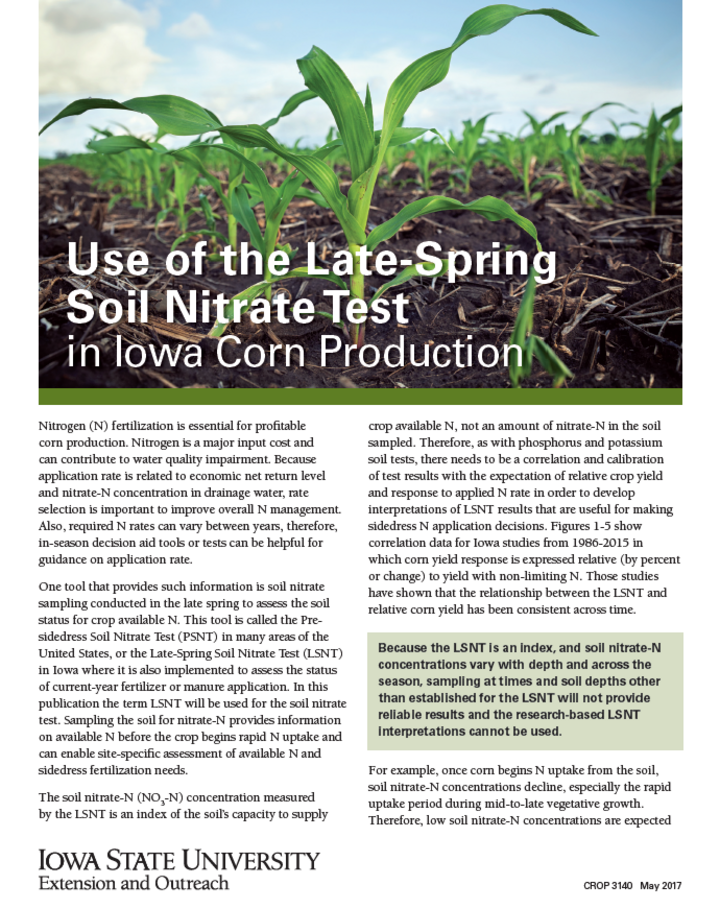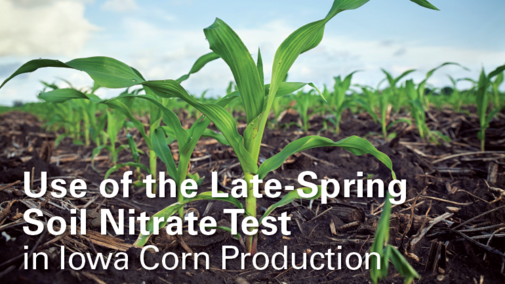The Late Spring Soil Nitrate Test (LSNT), sometimes called the Pre-Sidedress Nitrate Test (PSNT), has been used for about 30 years to assess the need for additional nitrogen. The University does not have a current research program to develop Nebraska use guidelines, but Iowa State University has and recently released a new version of its LSNT recommendations: Use of the Late-Spring Soil Nitrate Test in Iowa Corn Production.
The publication is thorough and gives advice on how to use the test. The specific calibration has not been verified for Nebraska. Rainfed fields may not respond as in Iowa since Iowa has greater precipitation through the summer, and therefore, continued soil mineralization of nitrogen. Summer rains are more consistent from year to year in Iowa than in Nebraska. Also, soil texture and organic matter differences might affect Nebraska results. Nebraska’s coarser soils and reduced organic matter might mean the calibration for Nebraska would be slightly different. Iowa recommendations specify not to use the test on sandy soils.
Most states that have calibrated the test find the critical level for soil nitrate is in the 22-25 ppm range. If a soil tests greater than this, there is little chance of a response to added N. The publication addresses the differences between fields with manure applied and those without.

Another option would be to establish “High N Reference” strips in the field and later in the season use aerial imagery or a handheld chlorophyll meter to determine if there is a shortage of N. This method requires that you can fertigate N on later in the season. Here are the steps you might follow:
- Establish field strips with abundant N (via sidedress application) that are spread out and represent majority areas of N management for how you manage your field.
- Monitor surrounding areas of the field with a handheld chlorophyll meter (model SPAD-502) and compare with the High N Reference areas.
- If the ratio of the surrounding area to your High N Reference is less than 0.95, put N on in the order of 30 lb/acre.
- Continue monitoring the rest of the season for further deficiencies.
This method has been shown to be successful at recovering yield in studies done by the University of Nebraska. For more information see the Nebraska Extension NebGuide, Using a Chlorophyll Meter to Improve N Management.
Another alternative for determining whether additional N is needed is to use a crop-sensing device; different sensors may have different procedures to determine additional N requirements.
On-Farm PSNT Research
If you’re interested in testing a Pre-Sidedress Nitrate Test recommendation strategy on your farm, the Nebraska On-Farm Network has created a protocol for an on-farm trial. For additional information contact Laura Thompson at laura.thompson@unl.edu.

